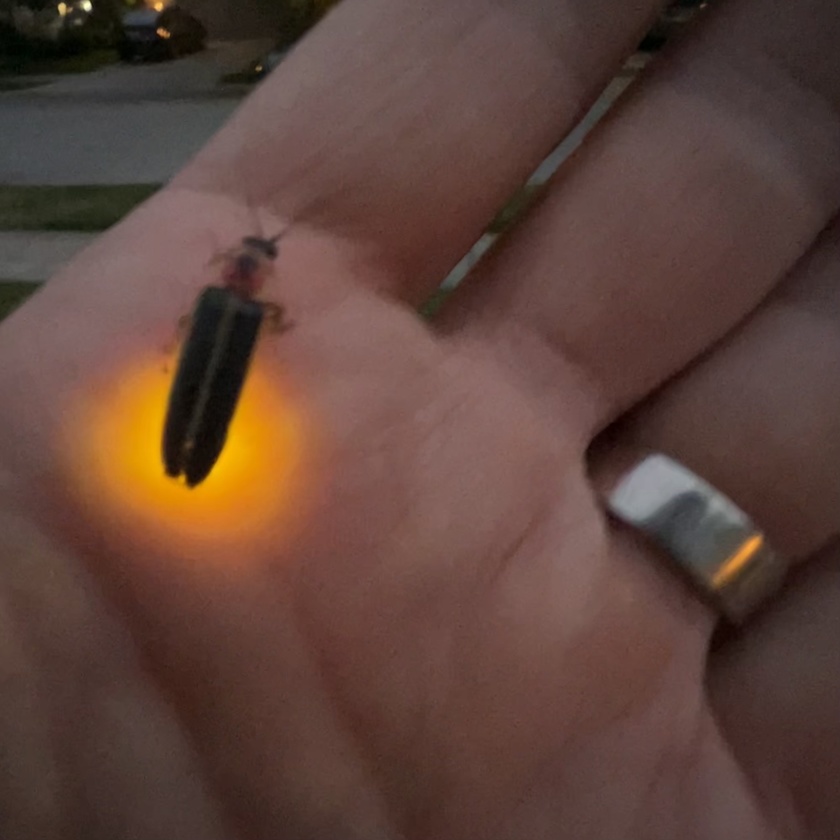This evening I caught a firefly outside my parents’ home in suburban Chicago. I saw my first firefly of the season last Thursday, June 22nd, which is a bit early for the season, but I could not catch it. Tonight I finally caught one and watched it glow. This has been a midsummer fascination of mine since I was a child, and it continues to delight me.
I tried to get a photo of the flash (which I sort of did). The problem is that fireflies tend to glow less often when you hold them, and they try to climb to the high point of your hand to fly away, so you have to keep curling your fingers around of knocking them gently back into your palm.
I took a photo of the firefly with the iPhone Live function, which lets you capture images over a period of time. I happened to get my wedding ring in the frame — perfect. I then let the firefly in the photograph go, and I tried with another. It would not glow for me and I think I may have hurt it by knocking it too hard into my palm.
I felt quite sad about that. I’m not a child; I should have the self-control not to harm a firefly. I don’t want to be too dramatic about it, but I felt I had injured a symbol of love by trying to use it, trying to make it conform to my own imagination. Real love is like that, too: it’s fragile and you have to respect that, while also letting it be what you want it to be.

This week’s portion launches the great story of Abraham, who is told to leave everything of his life behind — except his immediate family — and to leave for “the Land that I shall show you.”
There’s something interesting in the fact that Abraham is told to leave his father’s house, as if breaking away from his father’s life — but his father, in fact, began the journey, moving from Ur to Haran (in last week’s portion). His father set a positive example — why should Abraham leave him?
Some obvious answers suggest themselves — adulthood, needing to make one’s own choices, his father not going far enough, etc.
But I think there is another answer. Abraham (known for the moment as Abram) needs to establish his own household. This is not just about making one’s own choice, but really about choosing one’s own starting point. It’s starting over.
Sometimes we start over in fundamental ways even if much that surrounds us remains the same. Sometimes the journey we have to ...
The story of Noah is familiar; the details, less so.
Noah is often seen as an ambivalent figure. He was righteous -- but only for his generation. What was his deficiency?
One answer suggests itself: knowing that the world was about to be flooded, he built an Ark for the animals and for his own family -- but did not try to save anyone else or to convince them to repent and change their ways (the prophet Jonah, later, would share that reluctance).
Abraham, later, would set himself apart by arguing with God -- with the Lord Himself! -- against the destruction of Sodom and Gomorrah, saying that they should be saved if there were enough righteous people to be found (there were not).
Still, Noah was good enough -- and sometimes, that really is sufficient to save the world. We don't need heroes every time -- just ordinary decency.
Hi all -- as I noted last month, I'm going to be closing down my Locals page, at least for tips and subscriptions -- I may keep the page up and the posts as well, but I'm no longer going to be accepting any kind of payment.
Look for cancelation in the very near future. Thank you for your support!












